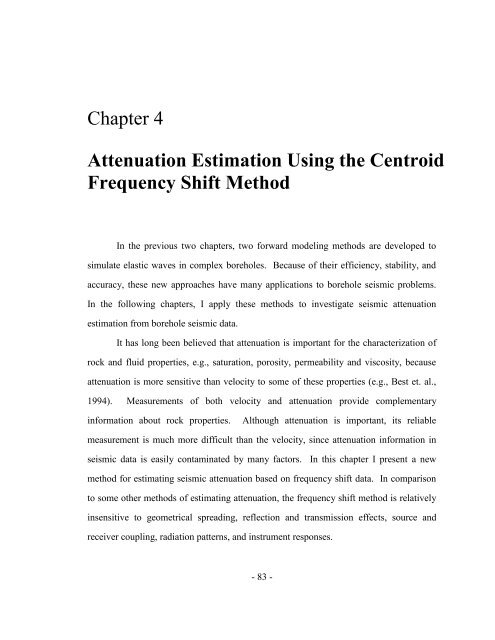My PhD Thesis, PDF 3MB - Stanford University
My PhD Thesis, PDF 3MB - Stanford University
My PhD Thesis, PDF 3MB - Stanford University
Create successful ePaper yourself
Turn your PDF publications into a flip-book with our unique Google optimized e-Paper software.
Chapter 4<br />
Attenuation Estimation Using the Centroid<br />
Frequency Shift Method<br />
In the previous two chapters, two forward modeling methods are developed to<br />
simulate elastic waves in complex boreholes. Because of their efficiency, stability, and<br />
accuracy, these new approaches have many applications to borehole seismic problems.<br />
In the following chapters, I apply these methods to investigate seismic attenuation<br />
estimation from borehole seismic data.<br />
It has long been believed that attenuation is important for the characterization of<br />
rock and fluid properties, e.g., saturation, porosity, permeability and viscosity, because<br />
attenuation is more sensitive than velocity to some of these properties (e.g., Best et. al.,<br />
1994). Measurements of both velocity and attenuation provide complementary<br />
information about rock properties. Although attenuation is important, its reliable<br />
measurement is much more difficult than the velocity, since attenuation information in<br />
seismic data is easily contaminated by many factors. In this chapter I present a new<br />
method for estimating seismic attenuation based on frequency shift data. In comparison<br />
to some other methods of estimating attenuation, the frequency shift method is relatively<br />
insensitive to geometrical spreading, reflection and transmission effects, source and<br />
receiver coupling, radiation patterns, and instrument responses.<br />
- 83 -
















